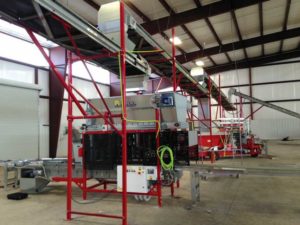Thoughts For Greenhouse Growers To Consider When Automating

Bell Nursery has made it a priority to invest in automation over the past four years, but Cole Mangum, Bell’s Vice President of Production, says the operation still has a long way to go.
If we could track the frequency of buzz words used by our industry magazines and conversations at trade shows, I’d bet the word automation has seen a dramatic increase in use over the last few years. This is for good reason, as discussions about automation frequently include the shrinking labor pool and rising minimum wage, or a combination of the two for a growing number of us (Bell Nursery included). These experiences are unlikely to become less of a concern any time soon. Most believe they will become an even bigger problem, so if you are not taking a hard look at automating parts of your business, it’s time to do so.
At Bell Nursery, we’ve made it a priority to invest in automation over the past four years and still have a long way to go. The most important part of the process for us has been a realistic understanding of who we are and where we expect to be in three, five, or seven years and more.
When looking at an investment, it is easy to get caught up in how it is going to solve an immediate need. Squeaky wheels do typically get the grease, but it’s important we analyze and anticipate how current investments can solve potential issues to come.
As an example, we recently built a production and shipping barn at one of our North Carolina facilities. While the short-term productivity gains have been excellent, we have a roadmap for continued automation implementation for the next 10 years to offset what we believe will be a continued shortage of seasonal labor and increasing wage pressure.
In addition to realistic expectations, being able to manage and measure your investments against those expectations is critical to achieving or beathing your goals for return on investment. Spending money is easy; monitoring that investment and making adjustments is the hard part. A number of people I’ve talked to have had bad experiences in the past with different pieces of equipment, and they agree that it
is important to take a fresh look at what new optionas are available to you.
Just like technology we use every day, horticultural automation is more reliable and easier to use than it was in the past. A bad experience with a transplanter back when transplanters were new technology shouldn’t be a reason to avoid buying one today, if increasing productivity in the planting process is a need in your organization. Would you avoid an iPod if your Walkman had issues 25 years ago?
Every time I visit another grower, I see interesting ideas that give me a fresh perspective on our operation. Talk to the various companies selling and find the best fit for you to work on a long-term plan. It’s important to stay ahead of automating your business, because it’s very difficult to catch up once wage or labor pressure are on your doorstep.










